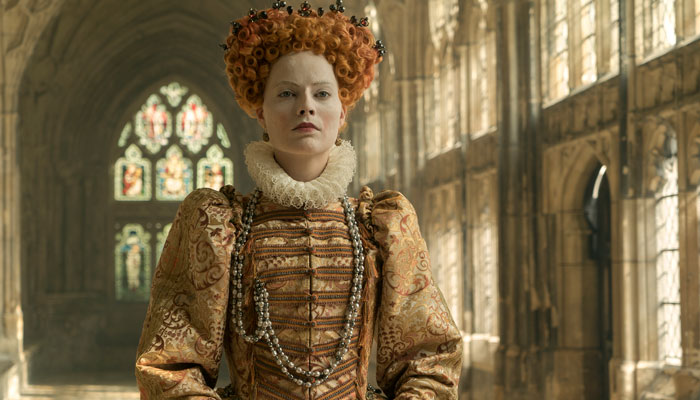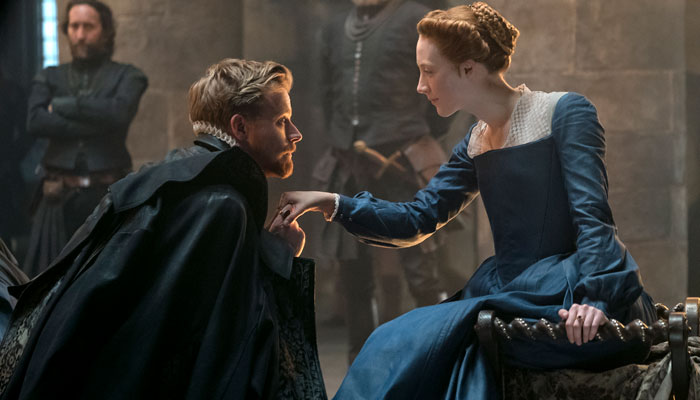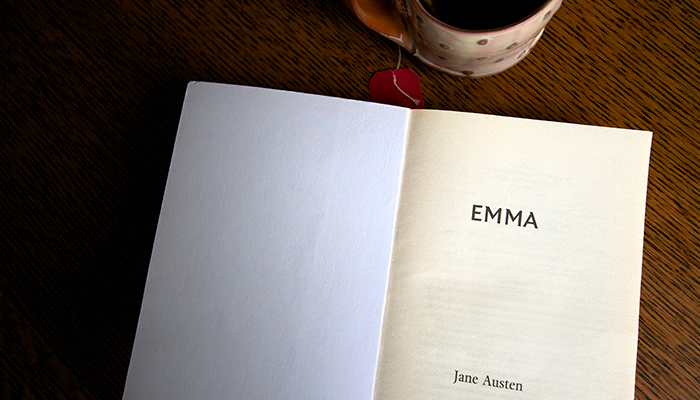The relationship between Mary, Queen of Scots, and her cousin, Elizabeth I, has long exerted a fascination. The latest intervention into this well-known tale is Josie Rourke’s film Mary Queen of Scots, which opened in Australia this week.

Australian Oscar nominee Margot Robbie plays Elizabeth 1 in the 16th Century story of the English Queen's rivalry with her cousin Mary, played by Saoirse Ronan. Image: Universal Pictures
Starring Saoirse Ronan as Mary and Australia’s own Margot Robbie as Elizabeth, Mary Queen of Scots is as much interested in the relationship between the two queens as it is the political situation of either Scotland or England. The movie, for all its gestures towards “wokeness” — the colour-blind casting, Mary’s tolerance of same-sex attraction, the film’s attempts to position Mary as a feminist icon — is very traditional in its approach to the material.
Mary has long been represented as a tragic, romantic figure, and much is made in the film of Mary’s (usually disastrous) relationship with men, as opposed to Elizabeth’s infamous virginity. The movie also concocts an historically inaccurate meeting between Mary and Elizabeth, which has angered many historians.
We are presented with a Mary Queen of Scots who attempts to rule compassionately, but can never elude being defined by her sexuality and maternity.
However, thinking about what a meeting between these two queens might have looked like has been a tradition in historical fiction and drama since Friedrich Schiller’s 1800 play Mary Stuart. Given that Rourke had access to two of the most popular young actresses of the day, it seems inevitable that a scene that gave them the opportunity to face off was concocted. Ronan makes for a very good “feisty” Mary, although Robbie seems less comfortable as Elizabeth.
While there is much to enjoy about Mary Queen of Scots, the film does not really do much that is genuinely new. While The Favourite, a film about another Queen (Anne), recently gave us a camp, gleefully bizarre vision of what a period film can be, Mary Queen of Scots is a much more conventional biopic.
We are presented with a Mary Queen of Scots who attempts to rule compassionately, but can never elude being defined by her sexuality and maternity. The film also gives us an Elizabeth trapped in a painted prison of her own making, jealously lashing out at Mary because of her own childlessness.
Elizabeth had also seen her mother and stepmother executed by her father, Henry VIII, which would surely be enough to turn anyone off the institution of marriage.

Saoirse Ronan plays a 'fiesty' as Mary Queen of Scots, doomed to be Elizabeth's prisoner for almost 20 years. Image: Universal Pictures.
Catastrophic errors vs extraordinary success
It does not consider the very real reasons that Elizabeth had to maintain her status as Virgin Queen. Elizabeth knew that marriage presented a real problem for female monarchs in the sixteenth century: any man that she married would be in a position of authority over her as a husband, despite her status as queen.
Elizabeth had also seen her mother (Anne Boleyn) and stepmother (Catherine Howard) executed by her father (Henry VIII), which would surely be enough to turn anyone off the institution of marriage. The film does present Mary’s marriages as real problems that she unsuccessfully navigates, but does not deal with the bigger, more interesting questions about women and power that the story of Mary and Elizabeth raises.
The film seems to work against itself in suggesting that Mary’s model of queenship was inherently superior to Elizabeth’s, given the historical reality that Mary was prone to making catastrophic errors of judgment, while Elizabeth was an extraordinarily successful queen. We cannot escape from the fact that Mary lived as Elizabeth’s prisoner for almost 20 years (although the timeframe seems compressed here), and that Elizabeth had her executed.
- Five things you didn't know about Jane Austen
- How Assassin's creed triggered a world-first Egyptian hieroglyphics decoder
There is much to enjoy in Mary Queen of Scots, however. The performances are strong, the costumes are lush, and the scenery is beautifully shot; this is a gorgeous-looking costume drama that offers all the attractions of prestige film-making. The dramatic reveal of Mary’s execution dress is worth the price of admission alone. At a time when the world seems still to be grappling with the idea of female political power, it is also a good reminder that women can rule, and have.

Stephanie Russo, pictured, is a Senior Lecturer in the Department of English, specialising in literature of the early modern period. She is currently working on a project on the literary afterlife of another Tudor queen: Elizabeth I's mother, Anne Boleyn.



